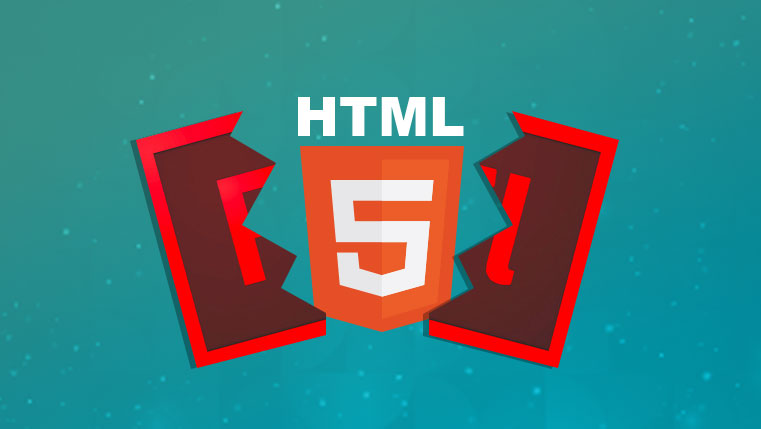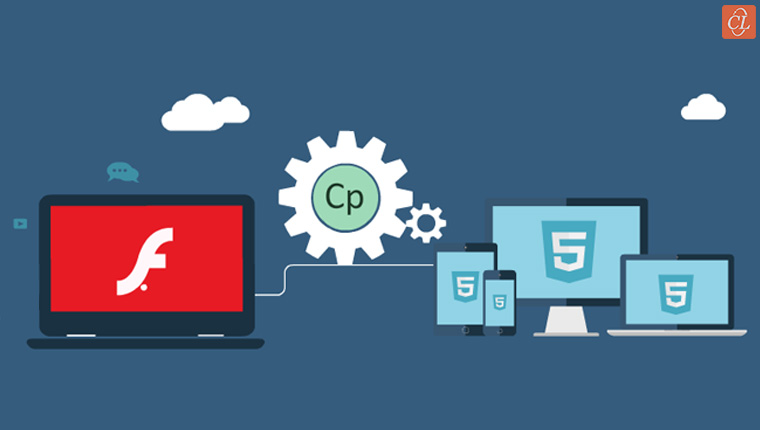Questions on Converting Flash to HTML5? Get Your Answers Here

With Adobe announcing that it will stop supporting Flash after 2020, organizations will need to convert Flash to HTML5 to ensure Flash-based courses can be reused. You too must be thinking of ways to salvage your e-learning courses.
I am sure you will have pertinent questions before you convert Flash to HTML5. Well, here is a list of FAQs on the topic. I hope the answers will clarify your doubts and prepare you better for the conversion.
A list of FAQs on converting Flash to HTML5
- What is Flash and why is it being phased out?
- What difference does the conversion make to eLearning development?
- What’s the organizational impact? Plus a whole lot of other questions answered on converting Flash to HTML5.
Top 22 FAQs on Converting Flash to HTML5
1. What is Flash?
Flash was originally introduced by Macromedia in 1996, until Adobe took over the company in 2005. Flash started off as a basic animation tool that evolved to include new features and became a standard plug-in for nearly every web browser.
The tool could:
- Create vector graphic-based animations, full-screen navigation interfaces, illustrations and interactivities
- Adjust to different display sizes and resolutions
- Occupy less disk space and could be compressed to reduce file sizes, which meant faster download
2. Why was Flash a favorite for developing e-learning courses?
Flash could create rich media and interactions. It became the backbone of web-based audio and video technologies, including the creation of e-learning courses. Other compelling features of this tool:
- Enabled the addition of audio, animations, and advanced interactivity in courses
- Helped in customization, based on the demands of course design
- A large user community that developers could use for help
- Enabled customized assessments
3. Why is Flash being phased out?
Flash was the default software for playing videos, animations, and games, but the issues with Flash were drainage on battery, heavy consumption of memory, and the problem of bugs. Other issues were:
- Incompatibility with mobile devices, no resizing to fit a mobile or tablet screen
- Poor security of the information sent or received
- Inability to support multiple browsers
Apple’s decision to not support Flash on iOS devices meant Flash couldn’t play on iPhones and iPads. These inherent problems forced companies such as Google, Facebook, and Microsoft to stop supporting Flash. And the rising popularity of other open standards such as HTML5 that offer better features have made organizations consider converting Flash to HTML5.
4. What is HTML5?
HTML or HyperText Markup Language is an open source software used for developing webpages. HTML5 is the latest version of HTML. It is the combination of three different codes – HTML, Cascading Style Sheets (CSS) and JavaScript, that are combined to develop webpages. Since it is an open web standard, it is available to everyone without any restrictions or license.
5. What can converting Flash to HTML5 do for e-learning development?
HTML5 became the popular choice for e-learning development when employees want to access their training on mobile devices. HTML5 is compatible with mobile devices and supports multiple browsers. Since HTML5 supports responsive e-learning, there is no need to develop separate courses for each device. This saves time, efforts, and money. Updating courses also becomes easy when you convert Flash to HTML5.
6. Why is HTML5 better than Flash?
Converting Flash to HTML5 supports responsive design, so it is accessible on mobile devices. Separate plug-ins are not required to view the content on multiple browsers. The running speed on different platforms is higher compared to Flash, and it is supported by iOS devices. And unlike Flash, there are little chances that it will be phased out.
7. Will HTML5 also be phased out like Flash?
Converting Flash to HTML5 may not recreate the rich interactivities or complex animations like those in Flash courses, but it scores well in terms of mobile accessibility, responsive design, and speed. More importantly, as it is not a proprietary software, it will not meet a similar fate like Flash.
8. What are HTML5 authoring tools?
There are authoring tools that give you an HTML5 output. They play a crucial role in converting Flash to HTML5. These tools not only provide HTML5 coding to produce responsive design but have readymade elearning templates and image libraries to recreate interactions and animations like older Flash courses.
9. How do authoring tools help in HTML5 design?
They help create mobile-friendly e-learning content. Their features support the creation of rich interactivities and multimedia elements in your courses. Creating courses with these tools is not expensive and moreover, they are easy to update and maintain.
10. Why should Flash courses be converted to HTML5?
Flash courses will become defunct by the end of 2020; to retain your valuable Flash courses, you have to convert them to HTML5. The other reasons to convert Flash to HTML5 include:
- Support by multiple browsers ensures your converted courses are accessible to employees without interruption
- Responsive output after conversion allows users to use multiple devices from laptops and tablets to mobiles to access these courses and also download them for offline viewing
- Provides a rich multimedia experience with interactions, graphics, animations, and easy customization
- Installation of plug-ins is not required for viewing on different browsers
11. Can I just use HTML5 coding to convert Flash to HTML5?
While you can use just HTML5 coding to convert your Flash courses, authoring tools are comparatively easier to use. Using HTML code requires programming knowledge, but authoring tools can be used by almost anyone. With coding, you cannot recreate the rich interactivities or the animations of your old Flash courses. Updating courses is also difficult when you use HTML5 coding.
12. How will the conversion help organizations?
Flash to HTML5 conversion improves the security of your learning content because it does not require separate plug-ins unlike Flash, which makes it vulnerable to security threats. The conversion ensures that your e-learning courses are future-proof and need not be converted later because HTML5 will be the industry standard for a long time. After conversion, the output will also be SCORM/AICC, Tin Can compliant, so you can launch the courses on your LMS. Converting Flash to HTML5 makes them reusable, ensuring return of your investment in your Flash-based courses.
13. How will converting Flash to HTML5 help employees?
- HTML5 courses provide responsive output, so learners can access them on any device
- This device-independent learning makes learning anytime and anywhere a reality
- Responsive output ensures courses display equally well on all devices
- Security of devices is not compromised since there is no need for separate plug-ins to view these courses
- Courses can be tailored to meet the various demands of learners, you can include animations, interactions, or even game-based learning when you convert courses
14. What are the key steps in converting Flash to HTML5?
Converting Flash to HTML5 should be a well-thought out process, there are certain key steps you should follow:
- Collect all your e-learning resources – courses, videos and digital resources
- Organize and evaluate your content based on the availability of source files and relevant content
- Decide what you want to do with your courses
- Retain Flash elements in some courses
- Completely convert some courses
- Create an action plan and prioritize the courses to be converted
- Plan the conversion methodology for the courses, basically there are four Flash to HTML5 conversion options – the 4 ‘R’s – from which you can choose
15. How do I convert Flash to HTML5 when I don’t have the source files?
When you do not have the source files or if they are unusable, you can choose the Record option, where your existing courseware will be played and recorded using a screen capture program, like Camtasia. This method is appropriate if the course is self-running and has low level interactivities.
16. What are the options to convert courses with relevant content, that were built using previous version of authoring tools?
The conversion strategy would be to Republish the courses in the newer version of the same authoring tool which support HTML5 output.
17. What is the if you have to convert Flash to HTML5 while retaining the Flash elements such as graphics, animations, or images?
The option would be to Rebuild the courses using an authoring tool with HTML5 output.
18. What is the option to convert courses with relevant content but are instructionally weak?
The strategy to convert Flash to HTML5 in this case is to Redesign the courses in terms of instructional strategy, interactivities, and assessments, or even for a different mode such as microlearning or mobile learning.
19. Can I convert Flash to HTML5 in-house?
Yes, if you have a dedicated team with qualified people. They will understand your requirements and deliver what you need and on time. You can save on the costs of outsourcing when converting Flash to HTML5 in-house. But ensure your in-house team can handle complex conversion requirements and get the results you need.
20. What are the benefits of outsourcing the Flash to HTML5 conversion?
When you outsource the conversion process, the benefits are many:
- Access to a qualified team with the experience and expertise to carry out the various aspects of converting Flash to HTML5
- Vendor will be able to meet complex conversion requirements and can handle high volume of conversions in stipulated deadlines
- Redesign of old courses is possible because the vendor will have a dedicated instructional design team
21. How can I check if the converted course will work well on the LMS?
To do this, it is better to have a checklist in place which has a list of functionalities that you can test once the course is uploaded on the LMS. Check if the module launches correctly, has the correct language content. Check for the bookmarking function and if the assessment tracking and completion status work normally.
22. What should the checklist for a quality check of the converted courses contain?
The first item in your checklist should be to ensure if the course is true to the original, since there are chances of overlooking some crucial aspects while converting Flash to HTML5. You must check for things such as how far the converted course adheres to the storyboard, if the audio script and the onscreen text are the same as the original, or if any content is missing. You should check for clarity of the images and the alignment of text. Check for interface functionality and browser compatibility.
These are some of the common FAQs relating to Flash to HTML5 conversion. Once you get all the information, the next step is to start the process of converting Flash to HTML5. Our blog on Flash to HTML5 Conversions: A Checklist to Ensure A Smooth Conversion will give you a better insight.





